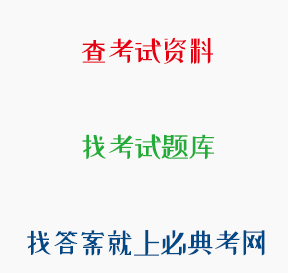正确答案: A
关爱学生
题目:师德的灵魂是()。
解析:关爱学生是师德的灵魂,倡导"关爱学生"就是要求教师有热爱学生、诲人不倦的情感和爱心。亲其师,信其道。没有爱,就没有教育。这是调节教师与学生关系的基本行为准则。故选择A。
查看原题 查看所有试题
学习资料的答案和解析:
[单选题]以下选项中对"热爱学生"理解不正确的是()。
热爱学生就是要得到学生和家长的馈赠
解析:教师"热爱学生",但不得接受学生和家长的馈赠,要做到"廉洁从教",因此选C。
[单选题]在中国教育史上,提倡问难与距师并主张学知与闻见,思考与求是的教育家是( )。
王充
解析:王充《论衡》中出"凡学问之法,不为无才,难于距师,核道实义,证定是非也。问难之道,非必对圣人及生时也"。论学习时,提出学知与闻见,思考与求是,问难与距师。问难不同于一般不明白时的提问,而是质问,提问者是经过个人思考,有自己的看法的。问难的对象没有限制,甚至可以是圣贤。"距师",即与师保持距离,也就是不能完全附和老师,要有自己的思考和见解。距师并不是拒师,王充更没有彻底否定孔子等圣贤的意思,他提倡的是追求学术真谛的精神,是勤于思索、实事求是的态度。A项,墨翟,即墨子。重要教育观点:墨翟以"兼爱"和"非攻"为基本主张,同时注重文史知识的掌握和逻辑思维能力的培养,还注重实用技术的传习,重视实践。同时认为获得知识的途径"亲知"、"闻知"和"说知"三种途径。B项,孟轲,即孟子,儒家学派代表人物,强调行仁政。重要教育观点:性善论一一身心发展的内发论;"孟母三迁"一一环境对教育的影响;"君子、圣贤、大丈夫"一一教育目的:盈科而进一一强调教育教学要循序渐进。D项,韩愈,著有《师说》、《原性》。主要教育思想:人性观一一人性分为上中下三品,与生俱来。学习观一一勤学、不学、积极思考。教师观一一"学者必有师",否定"生而知之",强调教育的重要性;教师任务,传道授业解惑;学无常师;不耻相师一一民主平等的师生关系。
[单选题]在人类历史上,最早出现专门论述教育问题的著作是( )。
《学记》
解析:《学记》不仅是中国古代也是世界上最早的一篇专门论述教育、教学问题的论著。故选择A。B项,昆体良的《论演说家的培养》也称《雄辩术原理》是西方第一本教育专著。C项,《论语》是"四书"(四书又称为四子书,是指《大学》、《中庸》、《论语》、《孟子》)之一,主要反映孔子的教育思想。除了教育思想外,还有相关的政治、道德、文化思想。D项,柏拉图的《理想国》阐明人类要从现实世界走向理念世界,非常重要就是通过教育。柏拉图是"寓学习于游戏"的最早提倡者。
[单选题]从评价的功能上区分,中小学教育评价的类型可分为( )。
形成性评价和终结性评价
解析:中小学教育评价,从评价的严格程度上考虑,可以分为正式评价和非正式评价:从解释评价结果的标准上考虑,可以分为相对评价和绝对评价;从评价的功能上区分,可以分为形成性评价和终结性评价。
[单选题]下列选项中,体现了同化性迁移现象的是( )。
举一反三
解析:同化性迁移是指不改变原有的认知结构,直接将原有的认知经验应用到本质特征相同的一类事物中去,以揭示新事物的意义与作用或将新事物纳入原有的经验结构中去。举一反三就是典型的同化性迁移的现象。
[单选题]既是德育客体又是德育主体的要素是( )。
受教育者
解析:受教育者既是德育客体又是德育主体。
[单选题]下列有美德育的说法,不正确的是( )。
德育过程由教育者、受教育者和德育方法三个相互制约的要素构成
解析:德育过程通常教育者、受教育者、德育内容和德育方法四个相互制约的要素构成。
[单选题] There are few more sobering online activities than entering data into college-tuition calculators and gasping as the Web spits back a six-figure sum. But economists say families about to go into debt to fund four years of partying, as well as studying, can console themselves with the knowledge that college is an investment that, unlike many bank stocks, should yield huge dividends.
A 2008 study by two Harvard economists notes that the "labor-market premium to skill"-or the amount college graduates earned that's greater than what high-school graduate earned-decreased for much of the 20th century, but has come back with a vengeance since the 1980s. In 2005, the typical full-time year- round U.S. worker with a four-year college degree earned $50,900,62% more than the $31,500 earned by a worker with only a high-school diploma.
There's no question that going to college is a smart economic choice. But a look at the strange variations in tuition reveals that the choice about which college to attend doesn't come down merely to dollars and cents. Does going to Columbia University (tuition, room and board $49,260 in 2007-08) yield a 40% greater return than attending the Uruversity of Colorado at Boulder as an out-of-state student ($35,542)? Probably not. Does being an out-of-state student at the University of Colorado at Boulder yield twice the amount of income as being an in-state student ($17,380) there? Not likely.
No, in this consumerist age, most buyers aren't evaluating college as an investment, but rather as a consumer product-like a car or clothes or a house. And with such purchases, price is only one of many crucial factors to consider.
As with automobiles, consumers in today's college marketplace have vast choices, and people search for the one that gives them the most comfort and satisfaction in line with their budgets. This accounts for the willingness of people to pay more for different types of experiences (such as attending a private liberal-arts college or going to an out-of-state public school that has a great marine-biology program). And just as two auto purchasers might spend an equal amount of money on very different cars, college students (or, more accurately, their parents) often show a willingness to pay essentially the same price for vastly different products. So which is it? Is college an investment product like a stock or a consumer product like a car? In keeping with the automotive world's hottest consumer trend, maybe it's best to characterize it as a hybrid (混合动力汽车):an expensive consumer product that, over time, will pay rich dividends.
In this consumerist age, most parents ________.
regard college education as a wise investment
解析:1.推断题。文中第三段倒数第二句提到“Does being an out-of-state student at the University of Colorado at Boulder yield twice the amount of income as being an in-state student ($17,380) there?”即在 Colorado内的学生支付的学费是$17380,仅为州外学生的一半,故选C。A、B、D都没有提到。
2.细节题。文中第二段第一句提到“…the“labor-market premium to skill”-or the amount college graduates earned that's greater than what high-school graduate earned-decreased for much of the 20th century”即在20世纪,大学生和高中毕业生之间的工资差距越来越少,选项C符合题意,故选C。
3.细节题。文中第三段有一系列的反问句,最后两句说“Does being an out-of-state student at the University of Colorado at Boulder yield twice the amount of income as being an in-state student ($17,380) there? Not likely.”即更高的学费并不代表以后会有更高的收入,即它们之间的关系很小,故选B。
4.细节题。文中第一段最后一句提到“…fund four years of partying,as well as studying, can console themselves with the knowledge that college is an investment that, unlike many bank stocks, should yield huge dividends”即:不像是许多银行的股票,四年的学习应该可以带来巨大的利润。即把大学教育当成了一项明智的投资,故选D。
5.态度题。文中最后一段最后一句提到“In keeping with the automotive world's hottest consumer trend, maybe it's best to characterize it as a hybrid; an expensive consumer product that, over time,will pay rich dividends”即大学是项昂贵的投资,但随着时间的推移,可能会有很丰富的利润,故选B。
[单选题]Which of the following represents a contextualized way of practising"How often..."?
I go shopping twice a week.How often do you go shopping?
解析:本题考查课堂教学。题干:下列哪个选项是在语境中练习"How often…"?A项"用 how often造句",B项"用how often和给出的单词造句",C项"我每周购物两次。你多久购物一次?"D项"请把这句话改成用how often提问的问句"。C项呈现了一个购物话题,是在语境中练习how often的用法。故本题选C。

 川公网安备 51012202001360号
川公网安备 51012202001360号